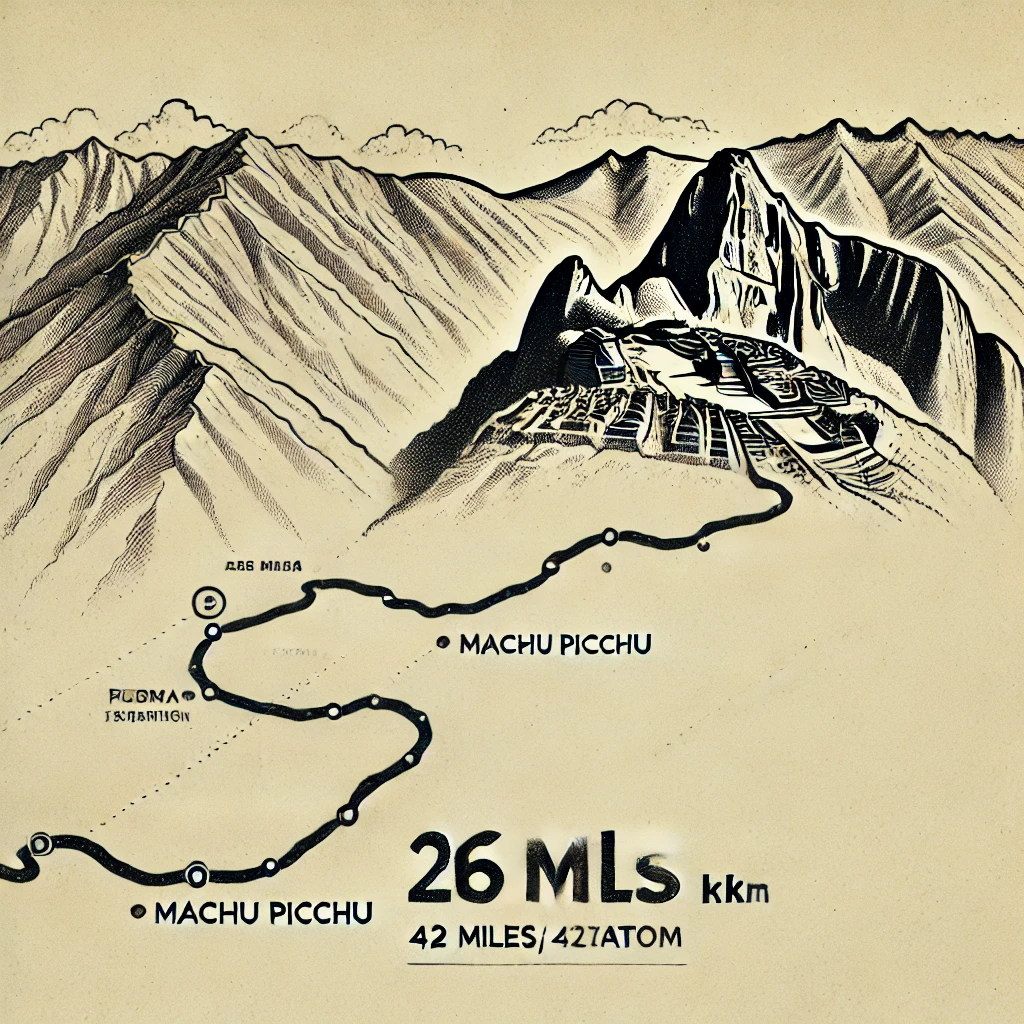Explore the captivating Inca Trail’s history, its stunning distance and elevation gain, and discover insights on duration and difficulty for your adventure.The Inca Trail to Machu Picchu is more than just a scenic trek; it’s a journey through history, culture, and breathtaking landscapes. Offering a unique glimpse into the ancient Incan civilization, this iconic trail attracts adventurers and history buffs alike from around the globe. With its stunning vistas and remarkable archaeological sites, it beckons those eager to explore its winding paths. But how long is the Inca Trail, and what should hikers expect in terms of distance, elevation gain, and overall difficulty? In this blog post, we’ll delve into the specifics of the Inca Trail, giving you all the essential details to prepare for this unforgettable expedition. Whether you’re a seasoned trekker or a curious traveler, understanding the trail’s challenges and beauty is vital before embarking on this incredible journey to one of the world’s most celebrated wonders—Machu Picchu.
The Historic Inca Trail
The Inca Trail is not just a trail; it is a historic path that leads adventurers to the breathtaking site of Machu Picchu. This ancient route has been trodden for centuries, linking the capital of the Inca Empire with the sacred city nested in the Andes mountains. Surrounded by rich history and majestic landscapes, the trail itself is an integral part of the experience.
Stretching approximately 26 miles (42 kilometers), the Inca Trail typically takes about 4 days to complete. Hikers can expect to gain about 3,600 feet (1,100 meters) in elevation, which adds to the challenge of this legendary trek. The combination of length, elevation gain, and varied terrain make it a moderate to difficult trek, suitable for those with a fair level of fitness.
Along the way, trekkers will encounter stunning ruins, lush valleys, and breathtaking mountain vistas. Each day of the journey presents unique challenges and rewards, leading you deeper into the heart of the Inca civilization. It is essential to prepare adequately for this expedition, as the majestic views and rich history await those willing to embrace the adventure.
Distance and Elevation Gain
The Inca Trail to Machu Picchu is renowned not only for its breathtaking scenery but also for its varying distance and elevation gain. The entire trek spans approximately 26 miles (42 kilometers) from start to finish. This distance is generally covered over a period of four days, allowing hikers to enjoy the diverse landscapes and historical sites along the way.
Throughout the journey, the elevation gain presents itself as a significant challenge. The trail begins at an altitude of around 7,870 feet (2,400 meters) at the starting point, known as Kilometer 82. As you ascend towards Machu Picchu, the trail reaches its highest point at Dead Woman’s Pass, which stands at an impressive 13,779 feet (4,215 meters). This elevation gain can be demanding, especially for those who are not acclimatized to high altitudes.
In addition to the overall elevation, the terrain itself contributes to the difficulty of the trek. Hikers will encounter both steep ascents and descents, rocky paths, and sections that can be slippery, especially during the rainy season. It’s essential for trekkers to be well-prepared and physically fit to tackle the challenging elevation changes they will face along the Inca Trail.
Duration and Difficulty
The Inca Trail trek to Machu Picchu is renowned not only for its historical significance but also for its challenging terrain and varying levels of difficulty. Covering approximately 26 miles (42 kilometers), the trail typically takes about 4 days to complete, depending on the pace and acclimatization of the hikers.
One of the defining features of trekking the Inca Trail is its elevation gain. The trail ascends to a maximum height of nearly 13,800 feet (4,200 meters) at Dead Woman’s Pass. This significant elevation poses challenges such as altitude sickness, especially for those unaccustomed to high altitudes. For many, it is essential to spend a day or two acclimatizing in Cusco before embarking on the trek.
The trail consists of various segments that vary in difficulty. The first day is relatively gentle, while the second day is known to be the toughest, with the most elevation gain. From rocky paths to steep stairs, the terrain can be demanding, making a reasonable level of fitness and preparation necessary. It’s advisable for trekkers to engage in some form of cardiovascular training prior to their adventure, ensuring they can meet the physical demands of this remarkable journey.
Frequently Asked Questions
The total length of the Inca Trail to Machu Picchu is approximately 26 miles (42 kilometers).It typically takes 4 days to hike the Inca Trail, although some trekkers may choose to complete it in 2 or 3 days.Some main attractions along the Inca Trail include Dead Woman's Pass, Wiñay Wayna, and several ancient Incan ruins.The Inca Trail is considered moderately difficult due to its altitude and steep sections, making proper preparation essential.Yes, a permit is required to hike the Inca Trail, and they must be booked in advance due to limited availability.The best time to hike the Inca Trail is during the dry season, which runs from May to September.You should pack essentials like sturdy hiking boots, warm clothing, a sleeping bag, a portable water filter, and high-energy snacks.


